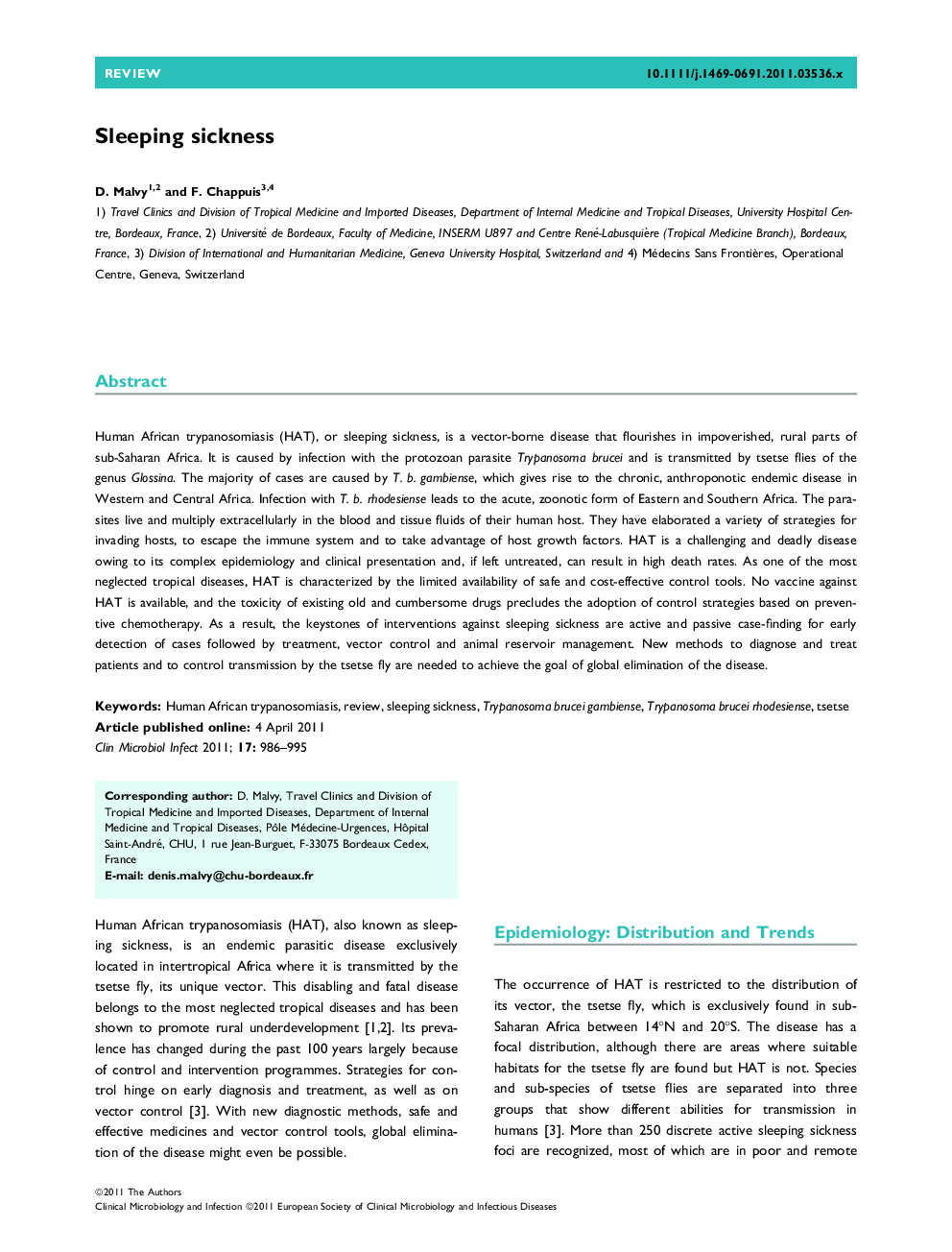| کد مقاله | کد نشریه | سال انتشار | مقاله انگلیسی | نسخه تمام متن |
|---|---|---|---|---|
| 3397682 | 1222241 | 2011 | 10 صفحه PDF | دانلود رایگان |

Human African trypanosomiasis (HAT), or sleeping sickness, is a vector-borne disease that flourishes in impoverished, rural parts of sub-Saharan Africa. It is caused by infection with the protozoan parasite Trypanosoma brucei and is transmitted by tsetse flies of the genus Glossina. The majority of cases are caused by T. b. gambiense, which gives rise to the chronic, anthroponotic endemic disease in Western and Central Africa. Infection with T. b. rhodesiense leads to the acute, zoonotic form of Eastern and Southern Africa. The parasites live and multiply extracellularly in the blood and tissue fluids of their human host. They have elaborated a variety of strategies for invading hosts, to escape the immune system and to take advantage of host growth factors. HAT is a challenging and deadly disease owing to its complex epidemiology and clinical presentation and, if left untreated, can result in high death rates. As one of the most neglected tropical diseases, HAT is characterized by the limited availability of safe and cost-effective control tools. No vaccine against HAT is available, and the toxicity of existing old and cumbersome drugs precludes the adoption of control strategies based on preventive chemotherapy. As a result, the keystones of interventions against sleeping sickness are active and passive case-finding for early detection of cases followed by treatment, vector control and animal reservoir management. New methods to diagnose and treat patients and to control transmission by the tsetse fly are needed to achieve the goal of global elimination of the disease.
Journal: Clinical Microbiology and Infection - Volume 17, Issue 7, July 2011, Pages 986–995